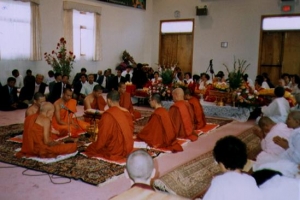Buddhism: Social Structure | 7
Social Structure
The fundamental structure of Buddhism is that it is a self-governing body of individuals, each of whom is theoretically equal and intent on his or her own salvation while compassionately mindful of fellow beings.
As soon as Buddhist monks began to form into groups, however, there was a need for rules (contained in the Vinaya Pitaka) and also for a degree of hierarchy that was needed to keep order, to enforce the rules, and to maintain religious purity within the community:
This hierarchy was, and continues to be, based on seniority—the longer one has been a monk, the more seniority he or she has.
There is thus no single authority in the Buddhist world:
Rather, each school has a leader or group of leaders who provide guidance to the community as a whole, and the degree of internal hierarchy varies considerably from school to school and country to country.
There has always been a symbiosis between the Sangha (community of monks) and the laity:
The former depends on the latter for material support, while the latter depends on the former for religious instruction. In these roles they keep each other in check:
The laity ensures the purity of the Sangha in that unless the community of monks remains well regulated and pure, the laity’s gifts will not bear fruit (positive karma);
likewise, the Sangha serves as a constant reminder and model to the laity of the proper, beneficial for salvation religious life.
